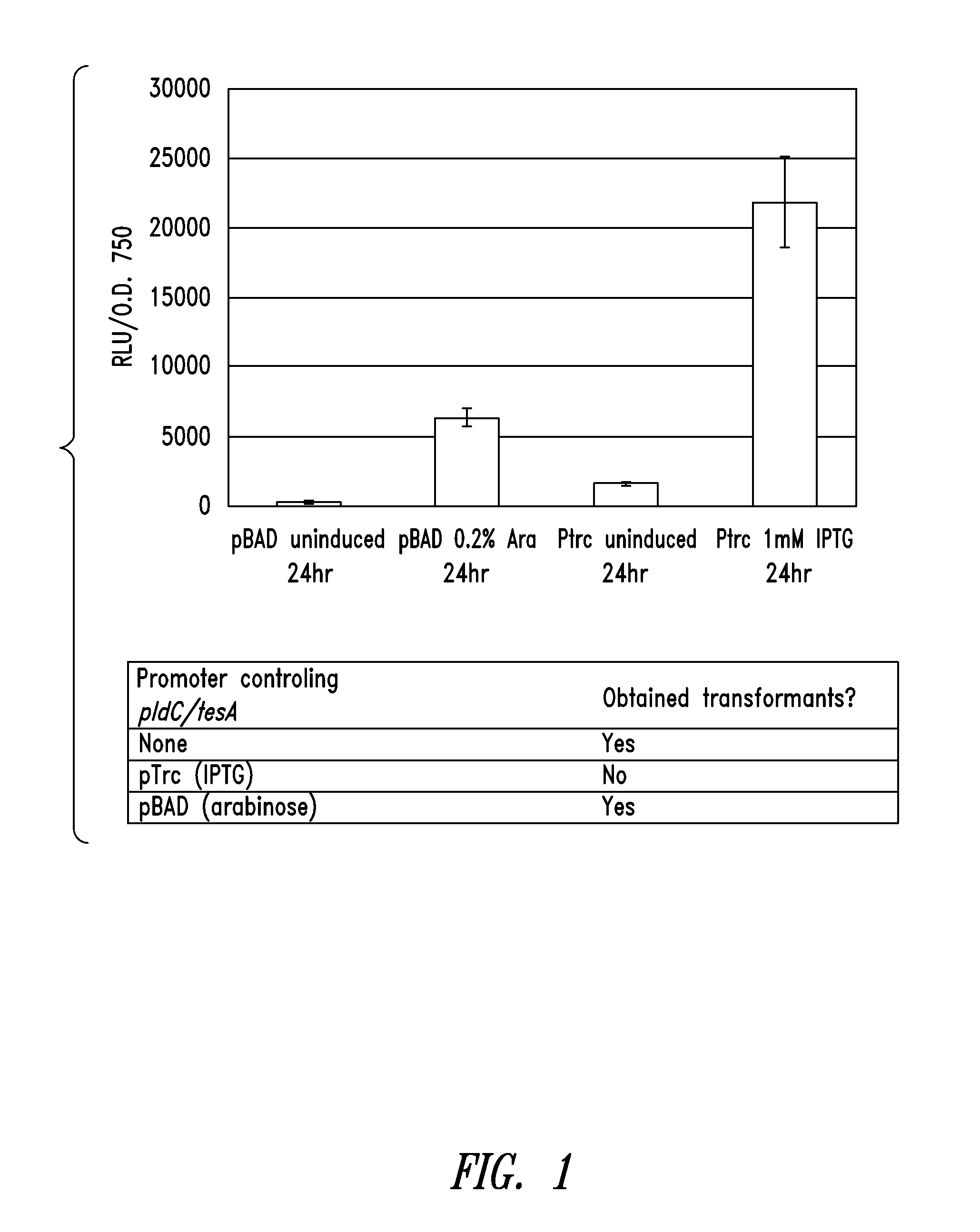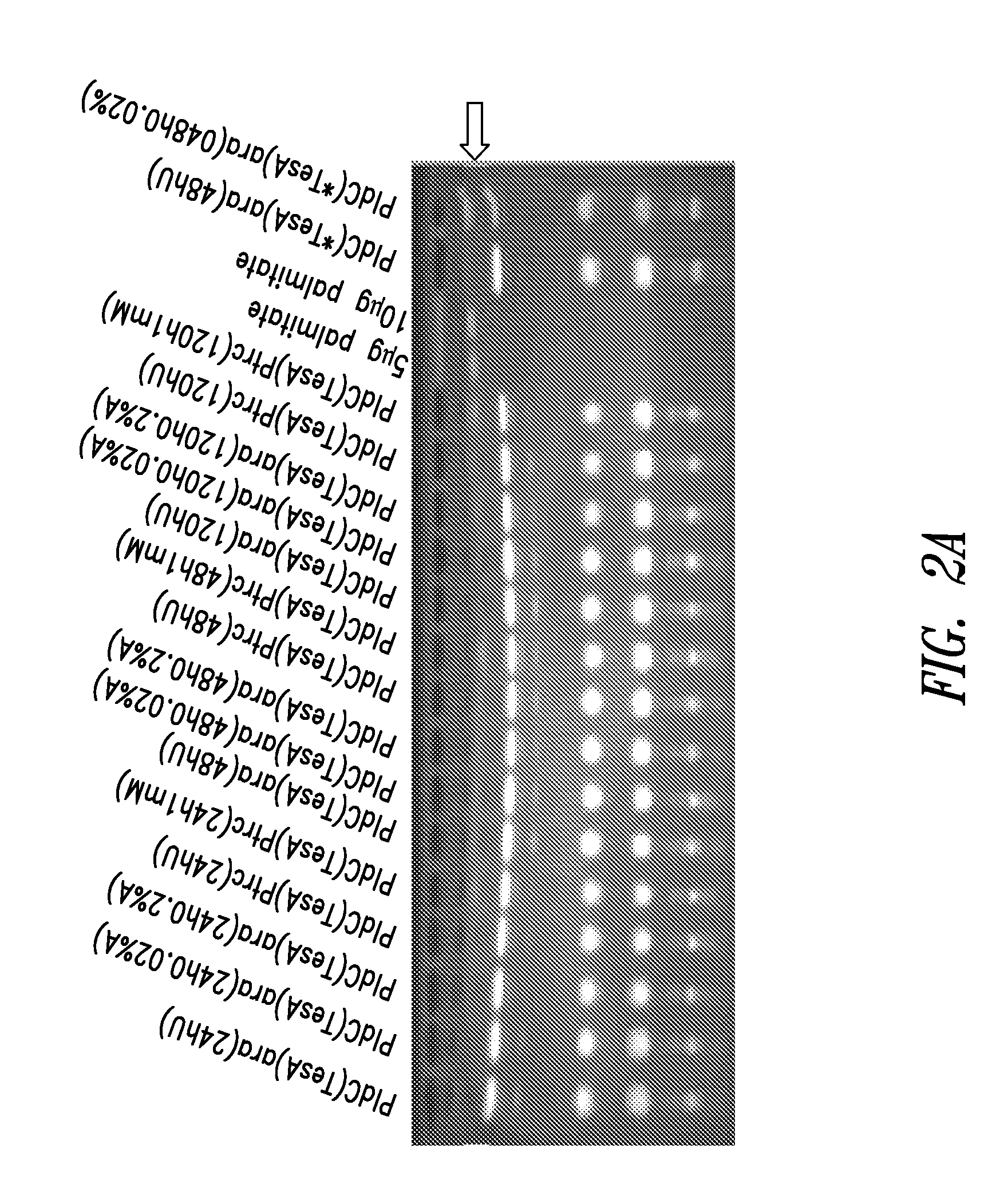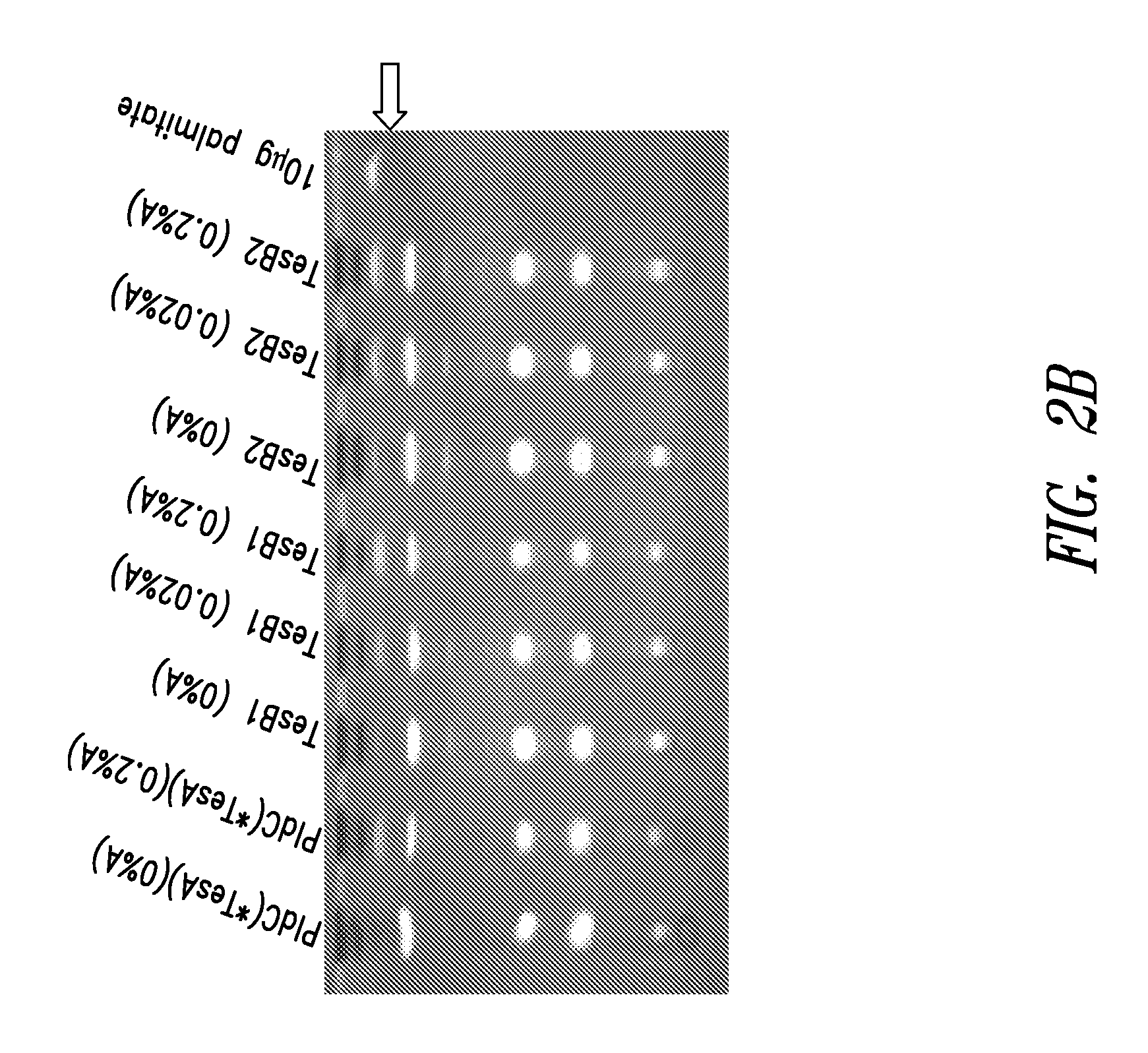Modified photosynthetic microorganisms for producing lipids
a technology of photosynthesis and microorganisms, applied in microorganisms, biofuels, enzymes, etc., can solve the problems of inability to readily genetically manipulate algae, no triglyceride energy storage molecules, etc., to reduce the expression of one or more genes, increase the amount of fatty acid and/or lipids, and reduce the amount of glycogen
- Summary
- Abstract
- Description
- Claims
- Application Information
AI Technical Summary
Benefits of technology
Problems solved by technology
Method used
Image
Examples
example 1
Generation of Cyanobacteria Expressing Phospholipases
[0333]E. coli, a gram-negative fatty acid degrading prokaryote, contains well-characterized lysophospholipases L1 and L2 encoded by the pldC(tesA) gene (cleaves acyl chain at the sn1 position of lysophosphatidic acid) and pldB (cleaves acyl chain at the sn2 position of lysophosphatidic acid), respectively. pldC(tesA) and pldB nucleotide sequences were synthesized, received in a plasmid, subcloned using established molecular biology techniques into an arabinose- or IPTG-inducible vectors and recombined into neutral sites 1 or 2 (NS1 or NS2) of Synechococcus elongatus PCC 7942. The pldB gene was codon optimized for Synechococcus elongatus PCC 7942 expression using DNA2.0. The sequence of the pldC(tesA) polynucleotide is shown in SEQ ID NO: 85; the sequence of the codon-optimized pldB gene is shown in SEQ ID NO: 95. Colonies were selected from BG11-spec / strep or BG11-kan, restreaked for isolation and tested by PCR for positive coloni...
example 2
Generation of Cyanobacteria Expressing Acyl-CoA / ACP Thioesterases
[0335]E. coli contains well-characterized thioesterases which can use acyl-CoA and acyl-ACPs as substrates. These thioesterases are encoded by pldC / tesA and tesB. The TesA thioesterase (TesA) and the E. coli Lysophospholipase L1 (PldC) are the same polypeptide, encoded by the same gene, denoted here as pldC(tesA). The cloning of pldC(tesA) and construction of cyanobacterial strains expressing that gene were described in Example 1. An additional modified version of pldC / tesA nucleotide sequence in which the 5 prime region that targets the enzyme to the periplasm in E. coli is omitted, PldC(*TesA), and the tesB nucleotide sequence, were synthesized, received in a plasmid, subcloned using established molecular biology techniques into arabinose-inducible vectors, and recombined into NS2 or NS1 of Synechococcus elongatus PCC 7942, respectively. The pldC / *tesA polynucleotide sequence was codon-optimized for Synechococcus elo...
example 3
Expression of Phospholipases / Thioesterases Using Low Strength Promoters
[0336]The expression level of two different inducible promoter systems were tested in cyanobacteria. A reporter gene, luciferase (luxAB), was cloned under control of the IPTG-inducible pTrc promoter or the arabinose-inducible-pBAD in recombination vectors for NS1 of S. elongatus PCC 7942 using established molecular biology techniques. The pTrc-luxAB or pBAD-luxAB containing vectors were transformed into S. elongatus PCC 7942 containing luxCDE genes expressed from a constitutive promoter, psbA1, recombined into NS2. The luxCDE genes produced the substrate required for the activity of luciferase enzyme encoded by luxAB. Tranformants were plated on BG11 containing Spec / Strep / Kan to select for recombinants containing the promoter-luxAB constructs in neutral site 1. Colonies that grew on BG11 spec / strep / kan were streak purified and tested for the presence of the pTrc-luxAB or pBAD-luxAB constructs in neutral site 1.
[0...
PUM
| Property | Measurement | Unit |
|---|---|---|
| Toxicity | aaaaa | aaaaa |
Abstract
Description
Claims
Application Information
 Login to View More
Login to View More - R&D
- Intellectual Property
- Life Sciences
- Materials
- Tech Scout
- Unparalleled Data Quality
- Higher Quality Content
- 60% Fewer Hallucinations
Browse by: Latest US Patents, China's latest patents, Technical Efficacy Thesaurus, Application Domain, Technology Topic, Popular Technical Reports.
© 2025 PatSnap. All rights reserved.Legal|Privacy policy|Modern Slavery Act Transparency Statement|Sitemap|About US| Contact US: help@patsnap.com



